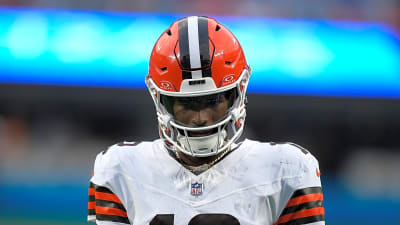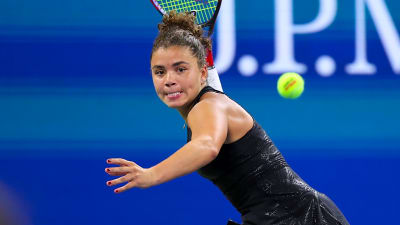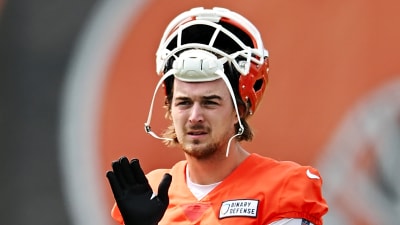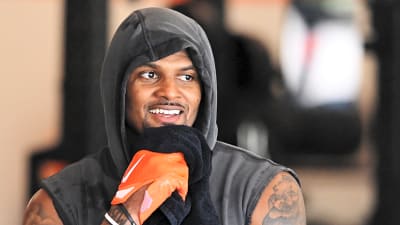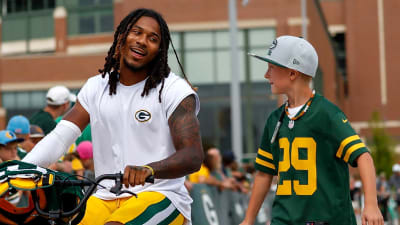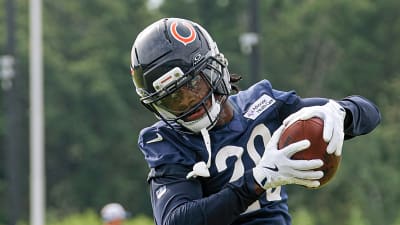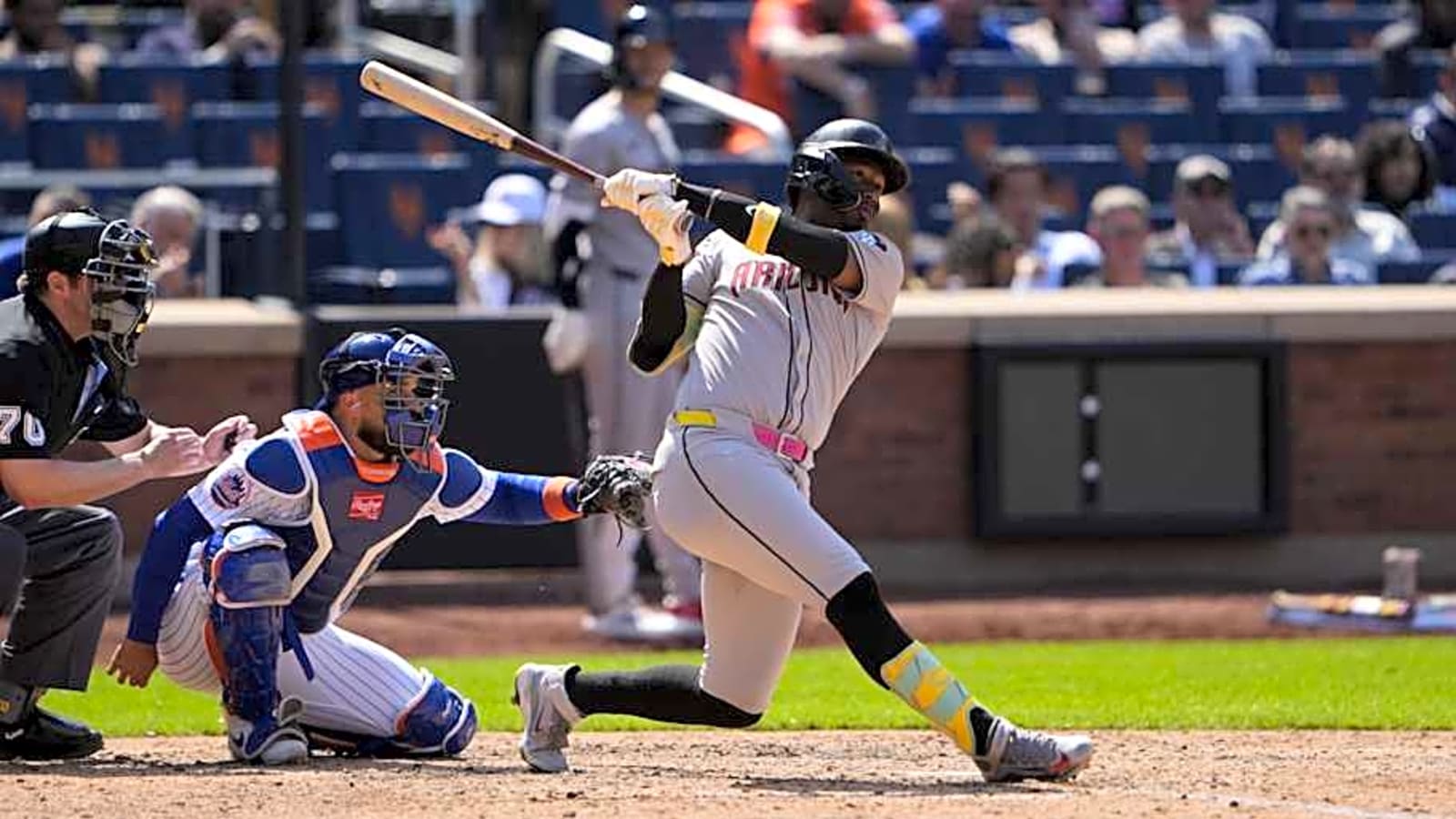
As the MLB season heads into the final stretch run to the 2025 regular season. Arizona Diamondbacks shortstop Geraldo Perdomo has emerged as not only the most valuable player on his team, but is even making a case to be in the NL MVP Award conversation
Diamondbacks Extend Geraldo Perdomo in Spring Training
Back in spring training, the D-backs made a bold move, extending the 25-year-old Perdomo to a four-year, $45 million contract extension that kicks in starting in 2026.
Perdomo made the All-Star team in 2023 after a hot start at the plate, and was a steady presence throughout the team's run to the World Series. He missed significant time with a knee injury in early 2024, but came back to post a 3+ WAR season is just 98 games.
Over those two seasons, Perdomo proved to be a league-average hitter playing a premium defensive position. He also exhibited tremendous leadership qualities, making him manager Torey Lovullo's de facto captain of the infield.
Related Content: D-backs' GM, Shortstop Reveal What Extension Means for Arizona
Geraldo Perdomo Breaks out Offensively
What followed next is somewhat of a surprise. While there clearly was more offensive upside to Perdomo's game at the plate, what he's done so far this year is far beyond expectations.
Early in the season, it was apparent that Perdomo was hitting the ball much harder, with authority. Adding that to his already terrific plate discipline made it appear a breakout might be underway. I wrote about that on April 15.
Related Content: Is this Shortstop Breaking Out for the Diamondbacks?
Fast forward to today, and in 130 games games he's batting .290/.393/.450, .843 OPS. That's good for a 136 wRC+, or roughly 36% above league average.
Perdomo has long since eclipsed his career highs in homers (14), RBI (84) and total bases (211). He's also batting .336 with runners in scoring position, continuing a career trend in that clutch category.
Comparing Perdomo to Other MVP Candidates in aWAR
WAR (Wins Above Replacement) is a good starting point to for delving into MVP candidacy.
While it should not be the only thing one looks at, it helps us see the total contributions from players at the plate, on the basepaths, and on defense.
There are two primary WAR metrics available, from Baseball Reference and from FanGraphs. Rather than get caught up in cherry picking which one to use, I prefer to average the two, creating aWAR or average WAR.
This also helps even out some of the differences the two systems come up with when it comes to defense, park factors and positional adjustments.
The table below shows the top 16 NL position players through games of Saturday, August 23. Pitchers are not included, as it's this writer's opinion that pitchers no longer throw enough innings, and the focus for them should be on the Cy Young Award.
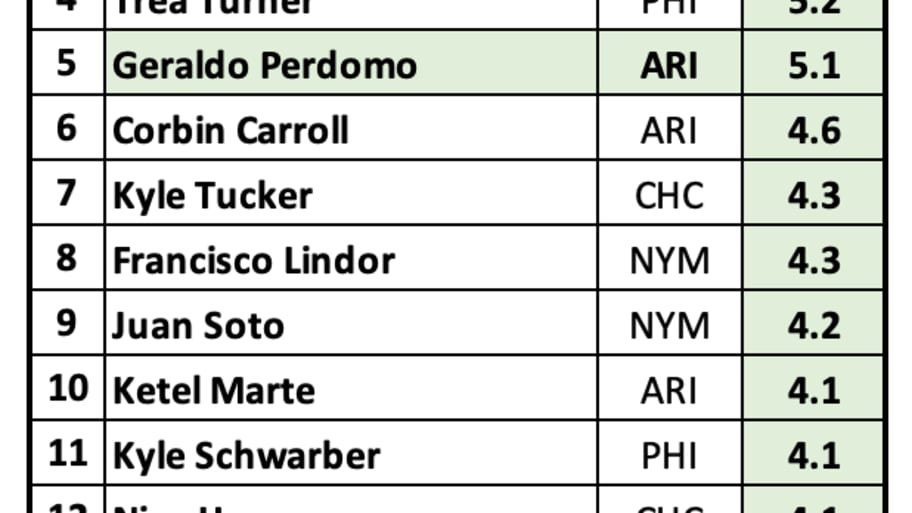
Perdomo is right there with 5.1 aWAR, in fifth place, mere decimal points out of the third highest rank.
In Shohei Ohtani's case, his pitching WAR is included in his aWAR. It should be noted that his peripherals on the mound are much better than his ERA, so FanGraphs WAR rates him one full WAR better than Baseball Reference does.
It would be disingenuous to suggest that anyone other than Ohtani is the favorite. But he is not dominating this race to the point where there can be no discussions. Things could change significantly over the remaining 30+ games.
Pete Crow-Armstrong has an extremely solid 5.9 aWAR, but his .296 OBP is an impediment. His total is simply too defense-heavy. Fernando Tatis Jr. has an excellent .366 OBP, but his slugging is just .432.
Changing the Win Expectancy
One stat that many may not be familiar with, but is an excellent gauge to consider when looking into MVP candidacy is RE24.
RE stands for Run Expectancy, and 24 refers to the 24 base/out states, i.e. nobody on, nobody out is one base/out state. Runner on first, nobody out is another, and so on.
Per FanGraphs Glossary:
"RE24 measures the change in run expectancy from the beginning of a player's plate appearance to the end of it. RE24 credits or debits a batter (or pitcher) for their role in changing a team's odds of scoring in a given inning.
"[RE24] is a measure of how well hitters are capitalizing on their opportunities while also not assigning extra credit (like RBI) to hitters who happen to come to the plate with men on base very often."
It is here that anyone who has watched a lot of Diamondbacks games can see the value of how well this metric describes what they see on a daily basis.
Perdomo changes the game, changes the win expectancy more than anyone on the team, and stunningly, has the third best RE24 among these top 16 MVP candidates.
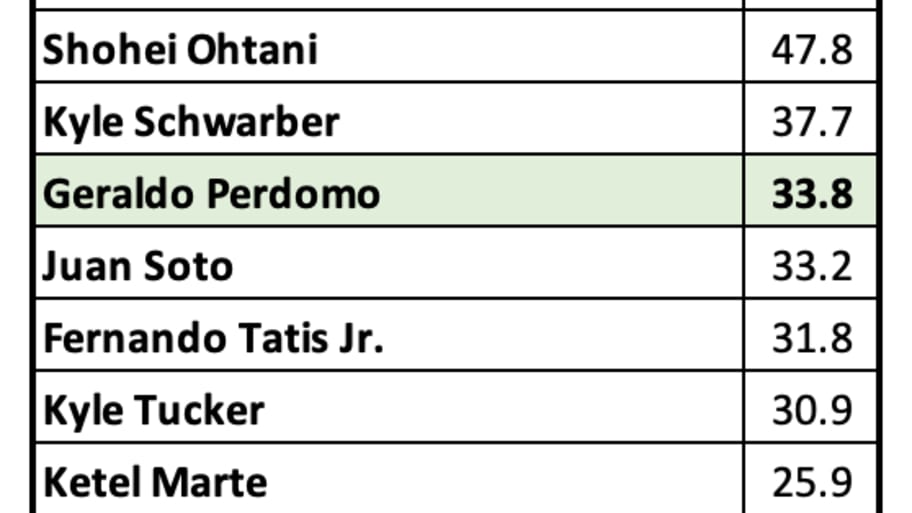
SUMMARY OF GERALDO PERDOMO'S MVP CASE
When one takes into account just how spectacular Perdomo has been in maximizing his opportunities, on top of his overall batting line, it's clear that he has become one of the premier offensive players in the league.
But these are not the only things he does that stand out.
Need a long at-bat, making a pitcher work? Perdomo averages 4.11 pitches per plate appearance, well above the league average 3.88 and in the top 20 in the NL.
Need a productive out?
His 10 sacrifice flys lead the NL, and his 28 total productive outs are the second most in the league. His productive out percentage per opportunity, 50% is the best of any player with at least 40 opportunities.
Need a player to take charge in the infield, gather his teammates around and calm everyone down in a tough situation? He'll do that too.
Do all this while playing a premier defensive position at shortstop, and you have yourself a bonafide MVP candidate. Who saw that coming?
If Perdomo is able to maintain this pace to the end of the season, and the D-backs come back to capture an unexpected Postseason berth, then all bets are off. The voters might just see it then.
But even if it's too late to overcome Ohtani's lead (and narrative), Perdomo will surely get some MVP votes, and he should receive more than most of the players on these list.
Arizona Diamondbacks Latest News
More must-reads:
- Cardinals move first-round pick to reserve/PUP list
- Cavaliers announce devastating injury news on veteran forward
- The 'Most NFL 1,000-receiving yard seasons' quiz
Breaking News
Trending News
Customize Your Newsletter
 +
+
Get the latest news and rumors, customized to your favorite sports and teams. Emailed daily. Always free!

